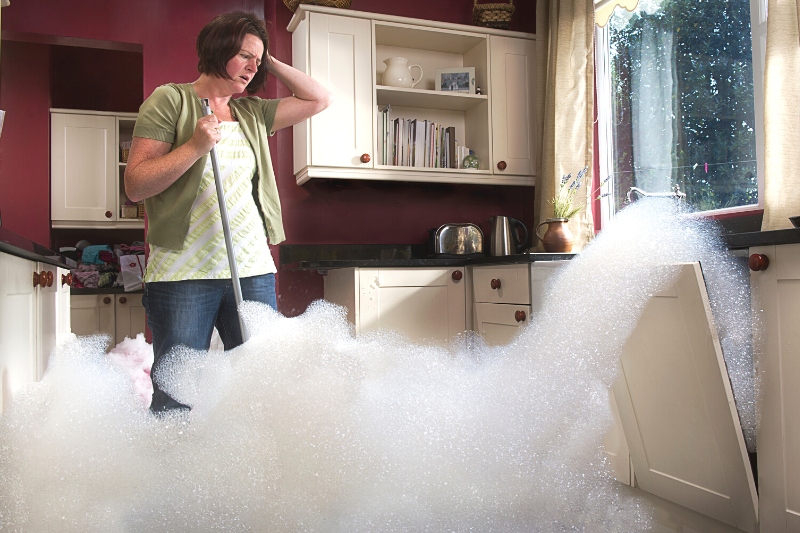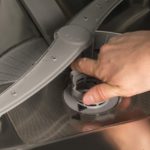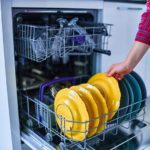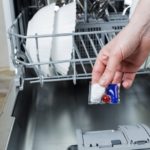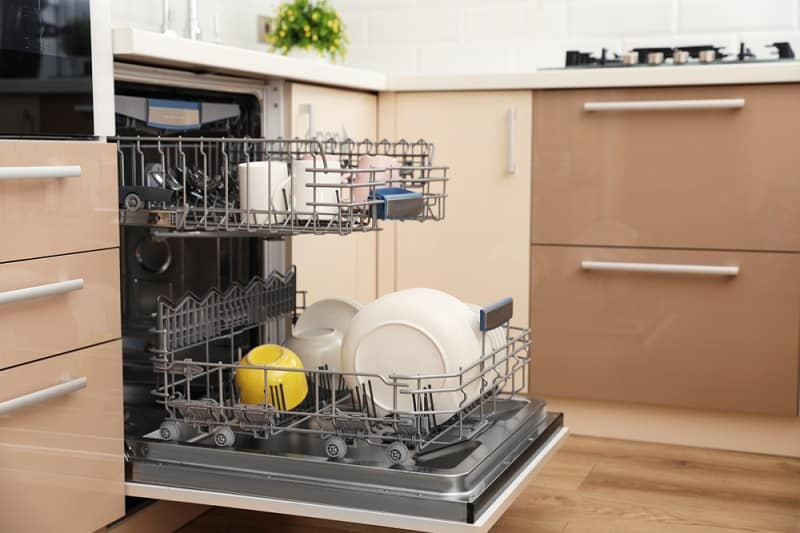There are several reasons why a dishwasher may suddenly overflow with water or soap. Before you dive head first into the bubbles and begin fixing the problem, you’ll need to make the dishwasher safe.
Most dishwashers nowadays have a ‘cancel’ button on the control panel to turn them off during the cycle. Press this and ensure the dishwasher stops the cycle fully and that you can open the door.
Next, turn off the power to the dishwasher for your safety while you clean up the water and detergent from the floor.
Once the floor is dry, you are ready to diagnose the issue your dishwasher has. Thankfully most of the causes of a dishwasher overflowing are fairly easy to spot and easy to fix too.
Cause 1: Using the Wrong Type of Detergent
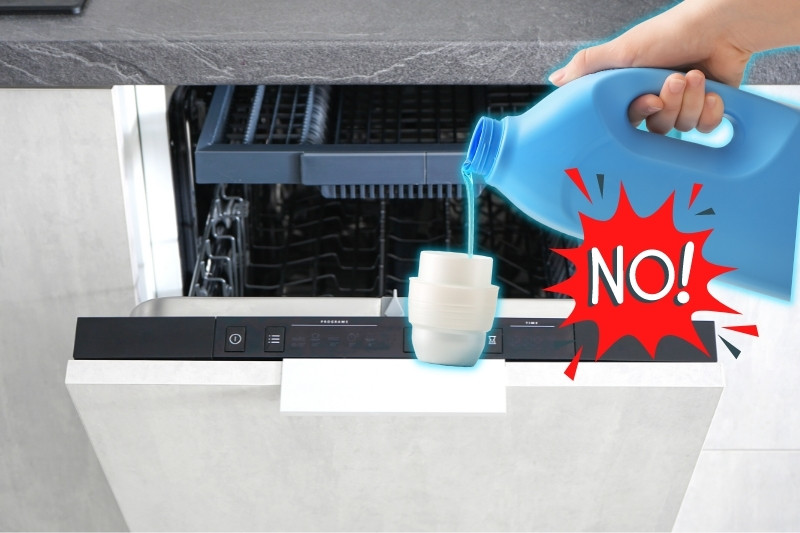
If you use anything other than normal dishwasher detergent in the machine, this can cause an excess of bubbles and suds. These can escape from the dishwasher and leave quite an impressive pile on the kitchen floor.
If there are a lot of bubbles but not too much water on the floor, it’s worth checking with the person who turned the dishwasher on to see what detergent they used. If they used the incorrect detergent, the mystery is solved.
Simply cleaning up the mess and using the correct dishwasher detergent in the future will solve your issue.
Cause 2: Faulty Float Assembly
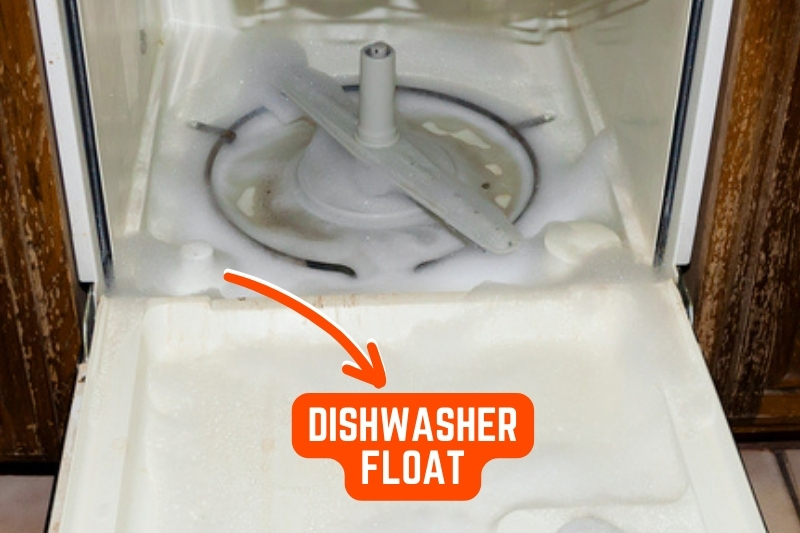
If the issue wasn’t the soap used, then it might be the float assembly. This is similar to the valve in your toilet tank that prevents it from overflowing.
Once the levels of water in the machine reach a specific height, the float assembly lifts up, and this turns off the water inlet pump until the water level decreases. If this doesn’t happen, water can leak out of the machine.
If the float assembly is faulty or broken, this will prevent it from working correctly, and it will need to be replaced.
There isn’t a one-type fits all float assembly, sadly, so we can’t help too much with the replacement. However, we do recommend looking at your user manual for your dishwasher to determine which float assembly you need.
You may also be able to find suitable videos online to help you change yours correctly.
Cause 3: Damaged or Obstructed Door Gasket
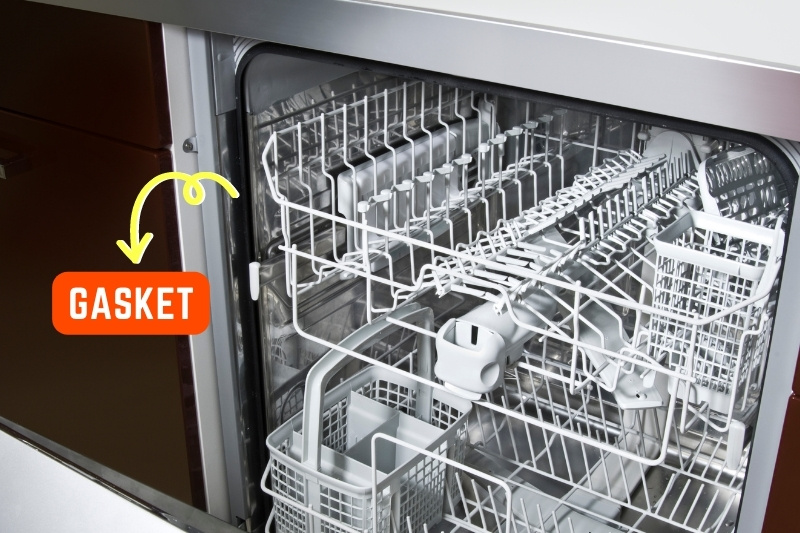
The door gasket of your dishwasher is really important. It creates a seal to prevent water from escaping during the cycle.
Take a look at the door gasket and see if you can see any areas that are damaged or if there are any areas with anything obstructing them. Food debris can get stuck in the gasket, and this can prevent it from sealing correctly.
If you notice any areas of the gasket that are worn, this will need to be replaced. Oftentimes, though, a good cleaning to remove grime and debris is enough to create a good seal again.
Cause 4: Broken Water Inlet Valve
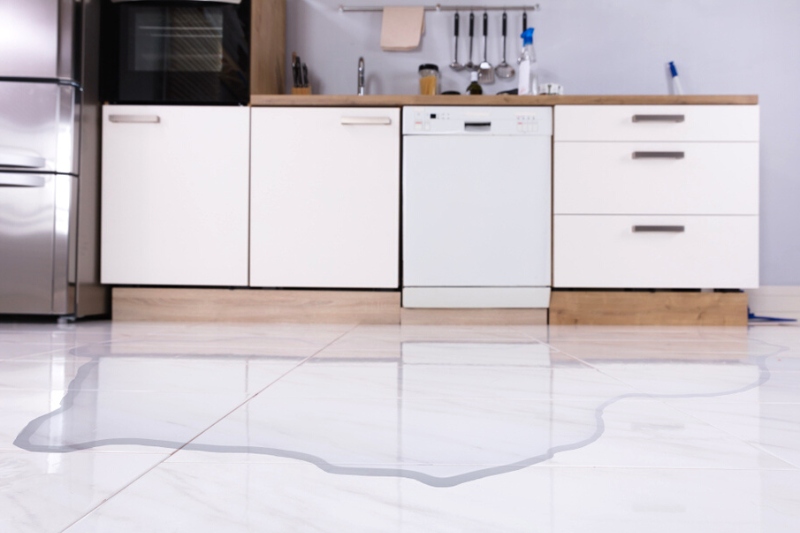
As we alluded to earlier, the water inlet valve is responsible for letting water into the machine during the cycle.
If this is faulty or broken, it may not switch off when it should. If this is the case, water will keep flowing, and this will result in water all over your kitchen floor.
For the most part, changing a water inlet valve in a dishwasher isn’t too tricky, and most models of dishwashers take a water inlet valve that is priced under £20.
Just ensure you find the correct water inlet valve for your dishwasher before you try and replace it.
Cause 5: Clogged Drain
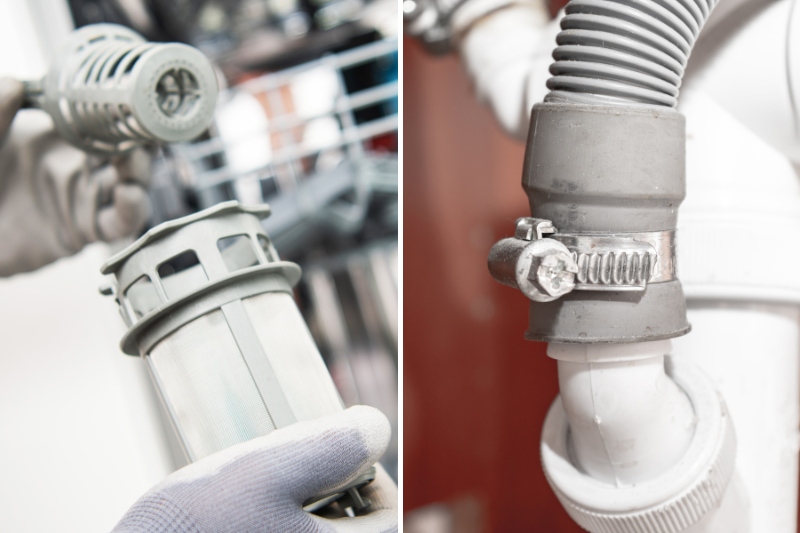
If the drain filter or the drain itself is blocked, then the dishwasher will not be able to drain the water away during the cycle. This can result in water coming out of the dishwasher.
Now, the drain filter is nice and easy to clean. Simply remove the filter, let it soak in warm water for half an hour or so and remove any debris.
The drain and the drain hose can be cleaned by adding equal parts bicarbonate of soda and vinegar to the bottom of the dishwasher and leaving it to soak into the debris, causing the clog.
When you notice the water level decreasing in the dishwasher, you can run a rinse cycle, and this should drain the rest of the water away.
We hope this look at overflowing dishwashers has been helpful. For more info about common issues with dishwashers and how to solve them, please explore In The Wash further.
We also have lists of the very best dishwashers available in the UK right now if your dishwasher is beyond repair.

In The Wash is your guide to the best laundry and cleaning products, tips and tricks. Our mission is to solve the UK’s cleaning and laundry dilemmas!
